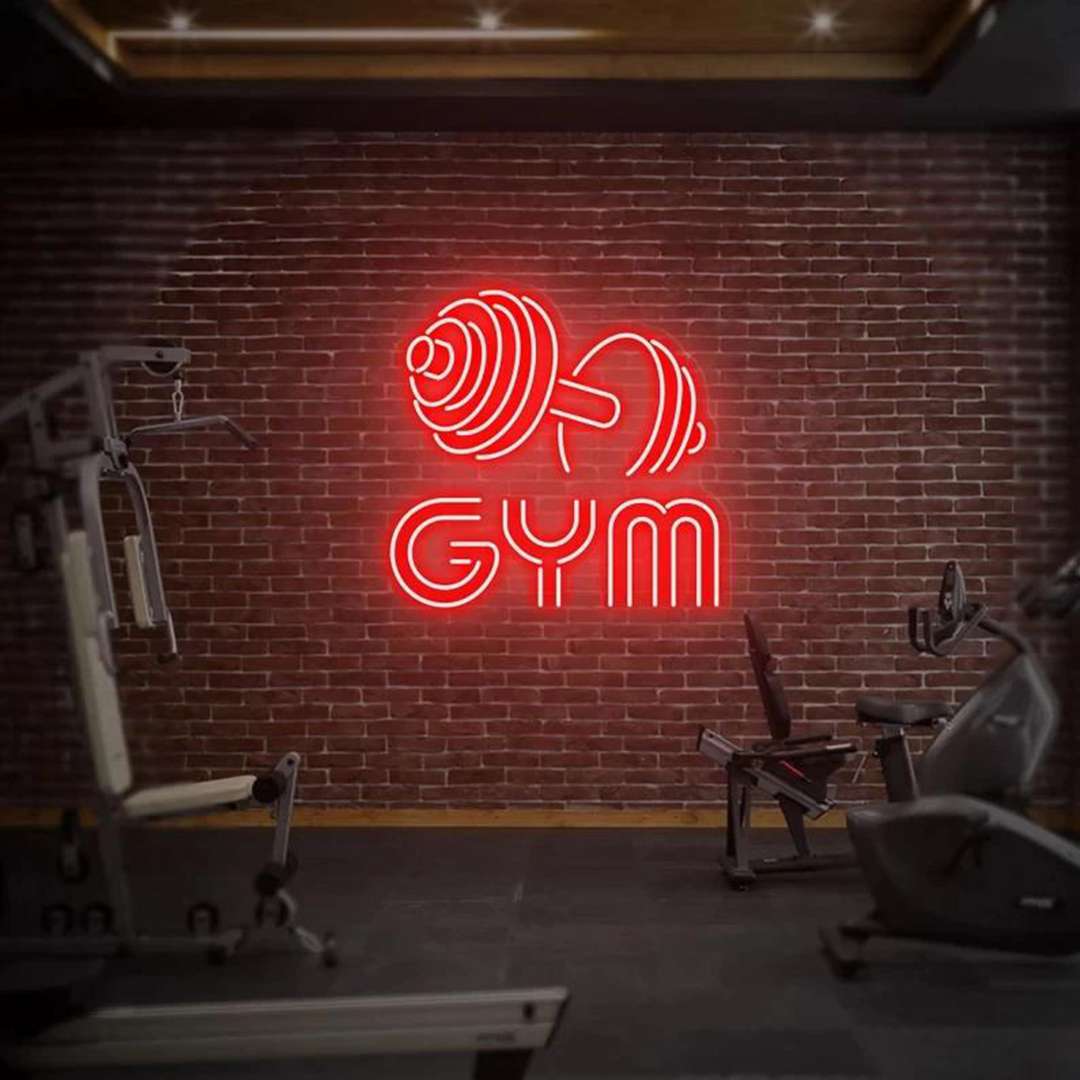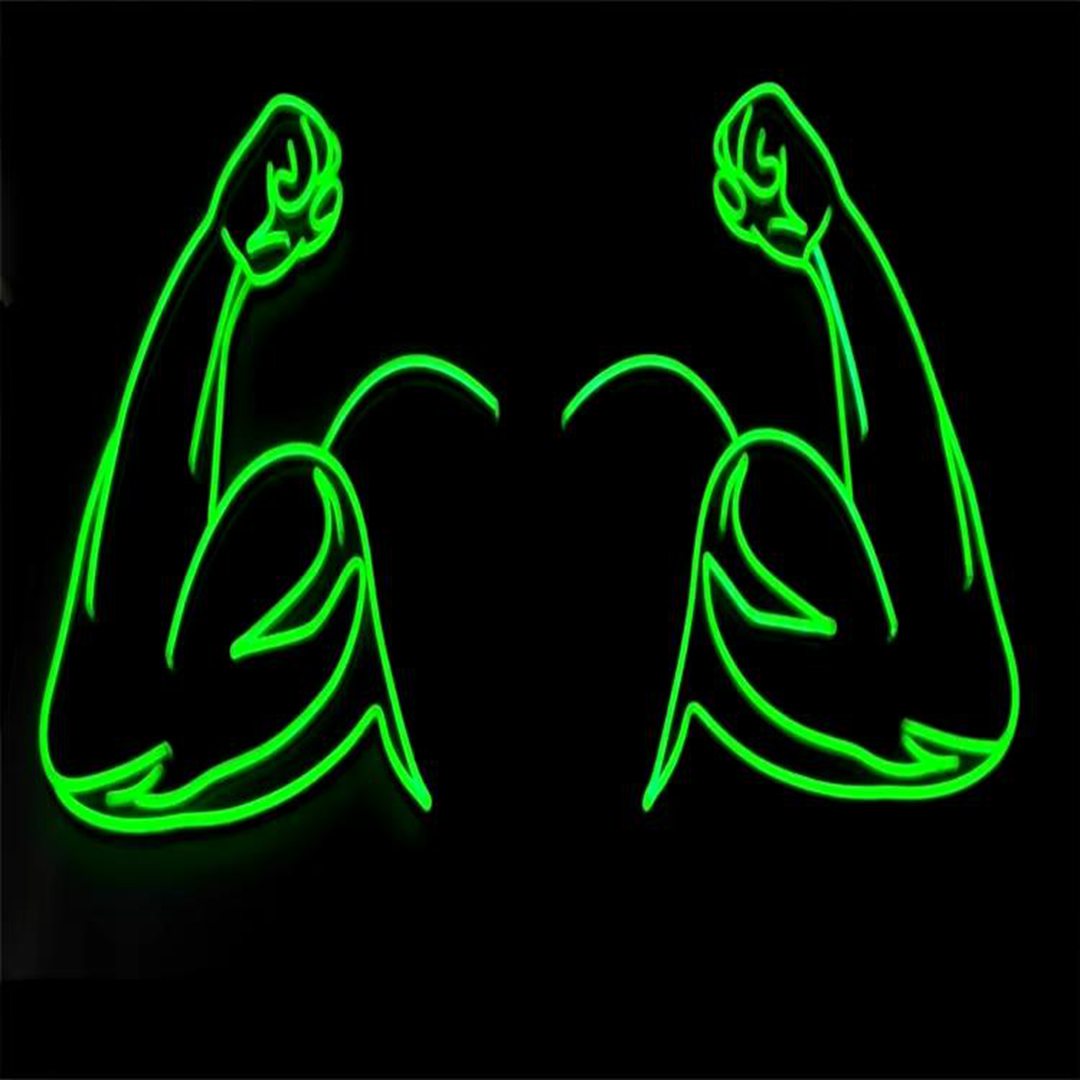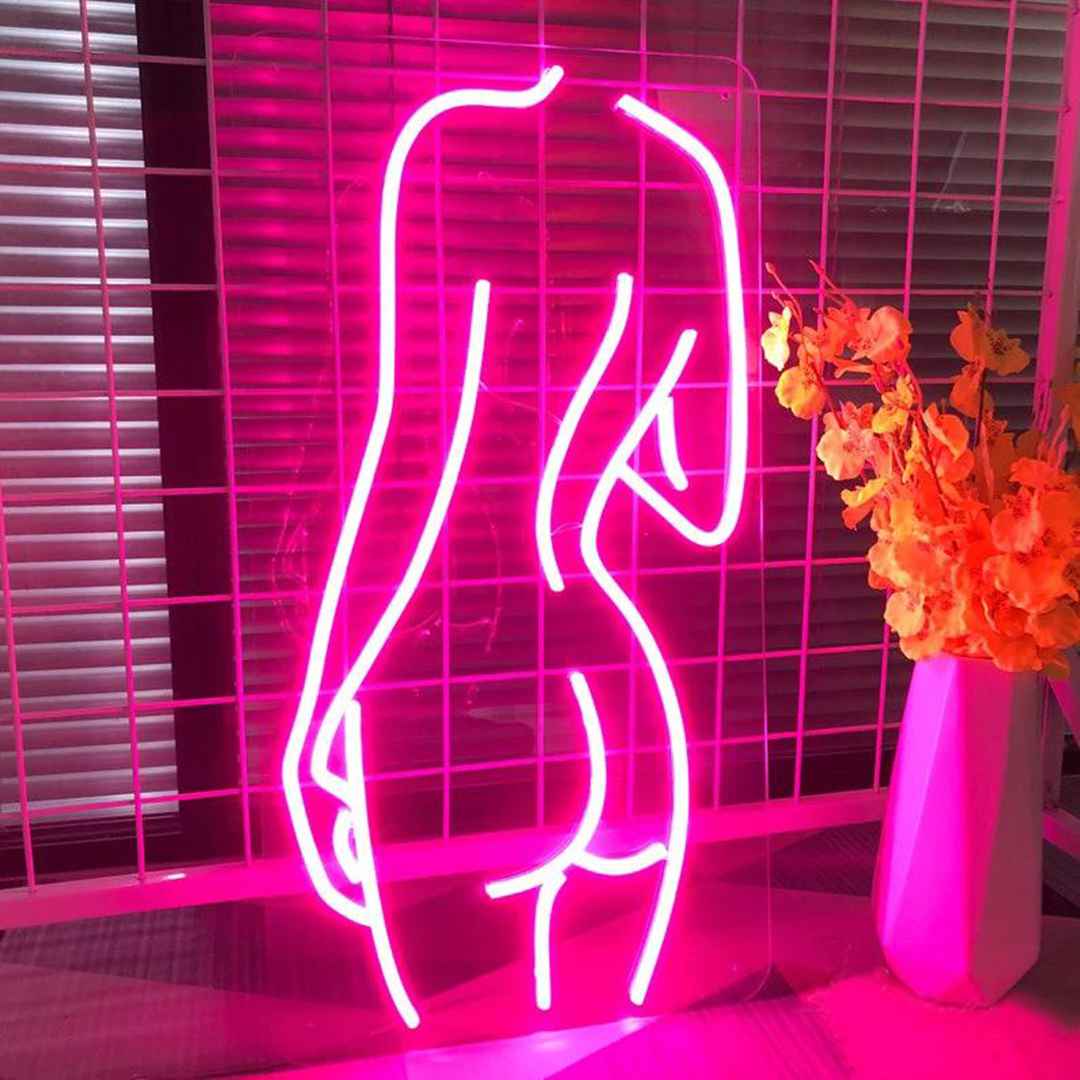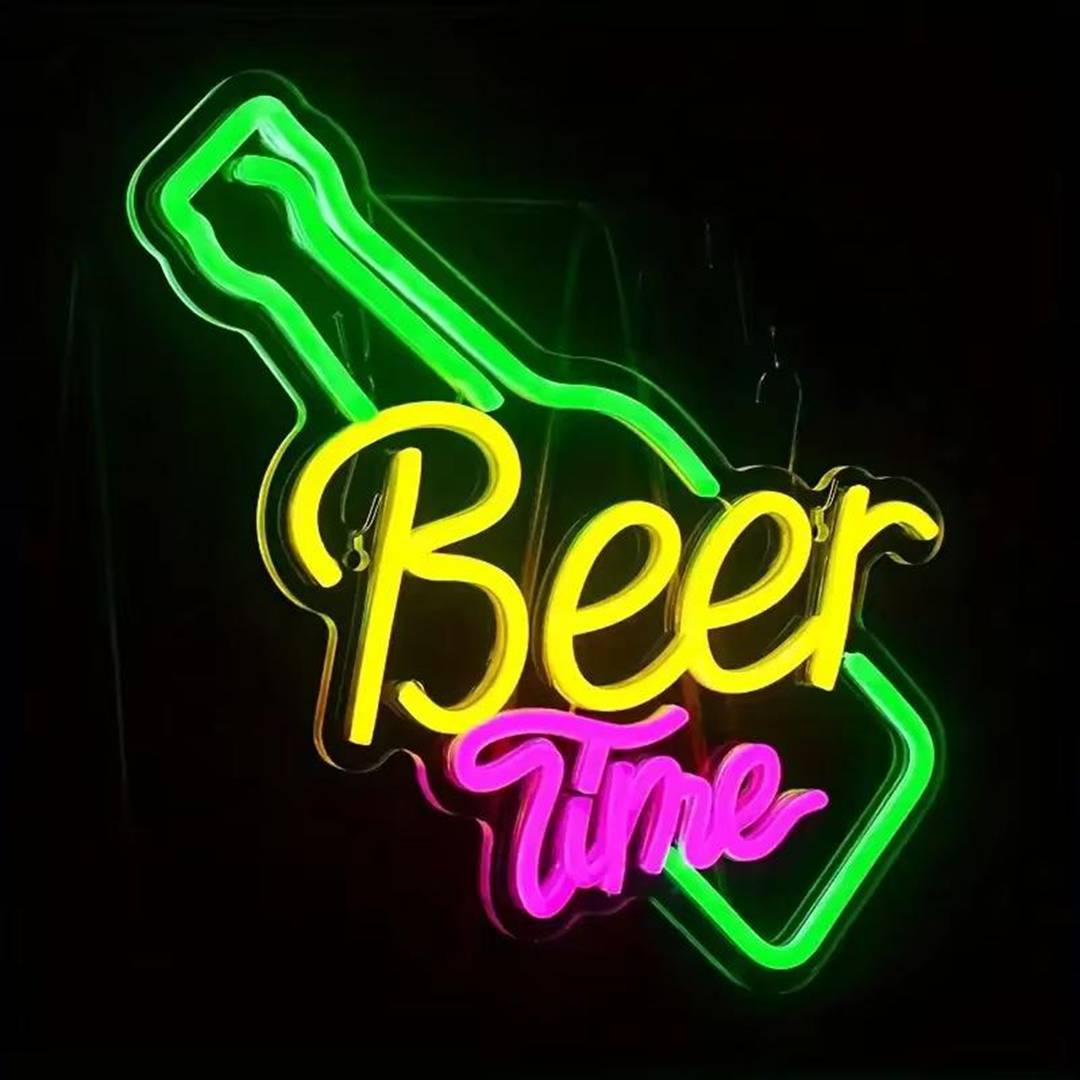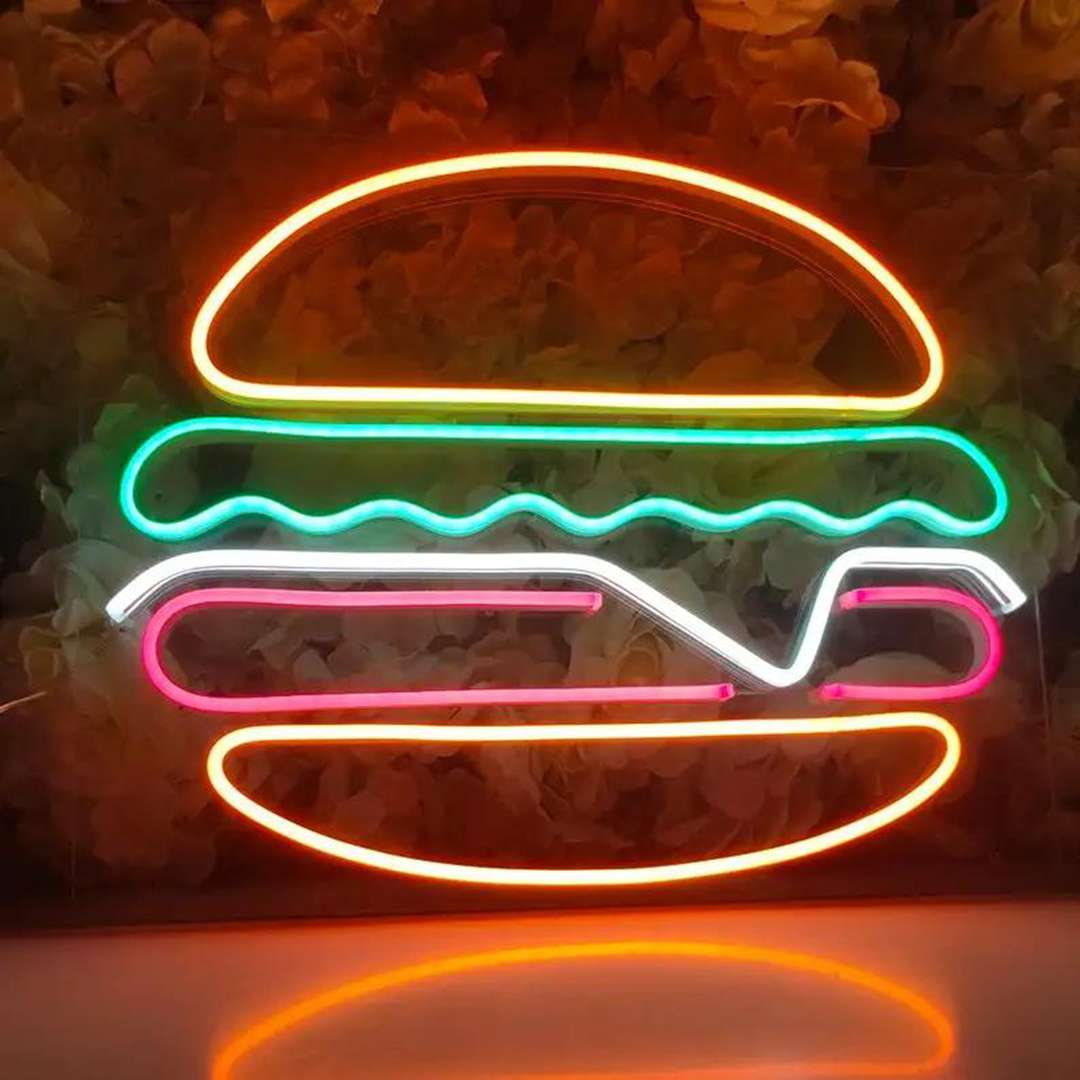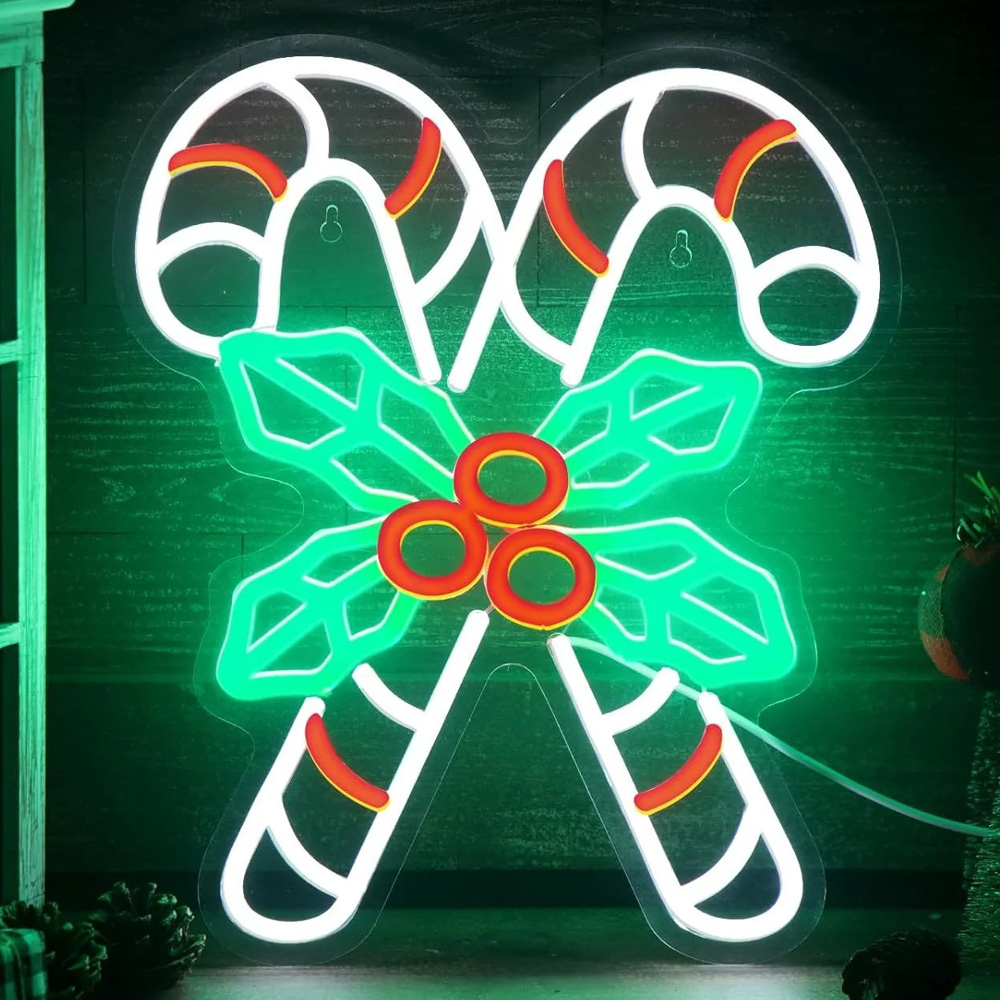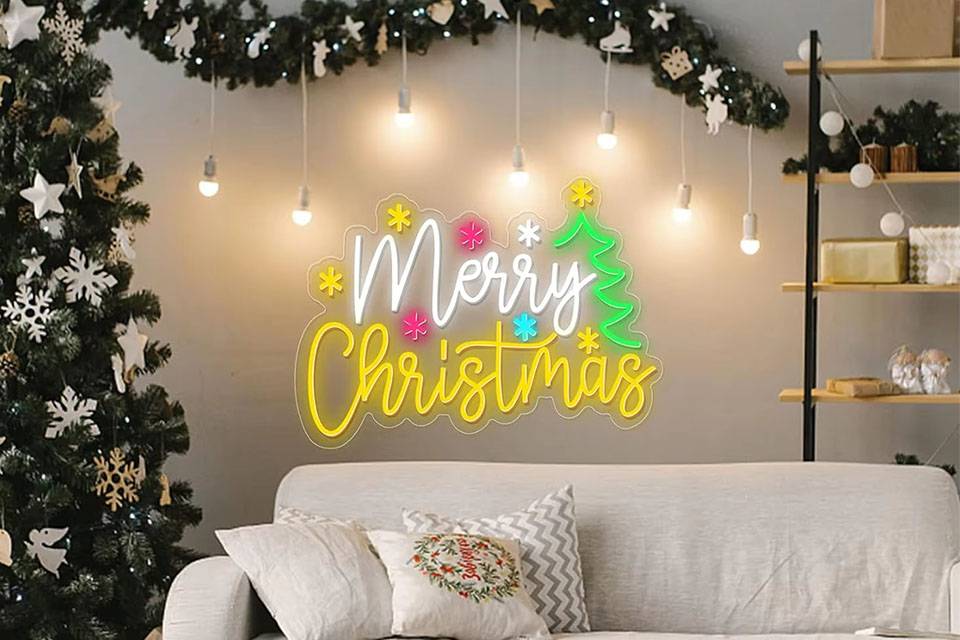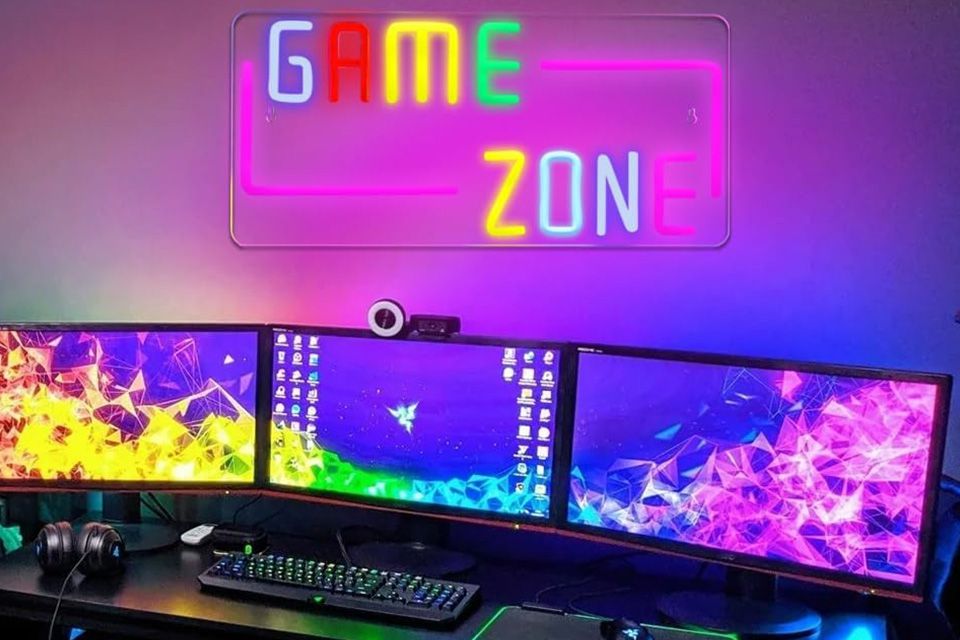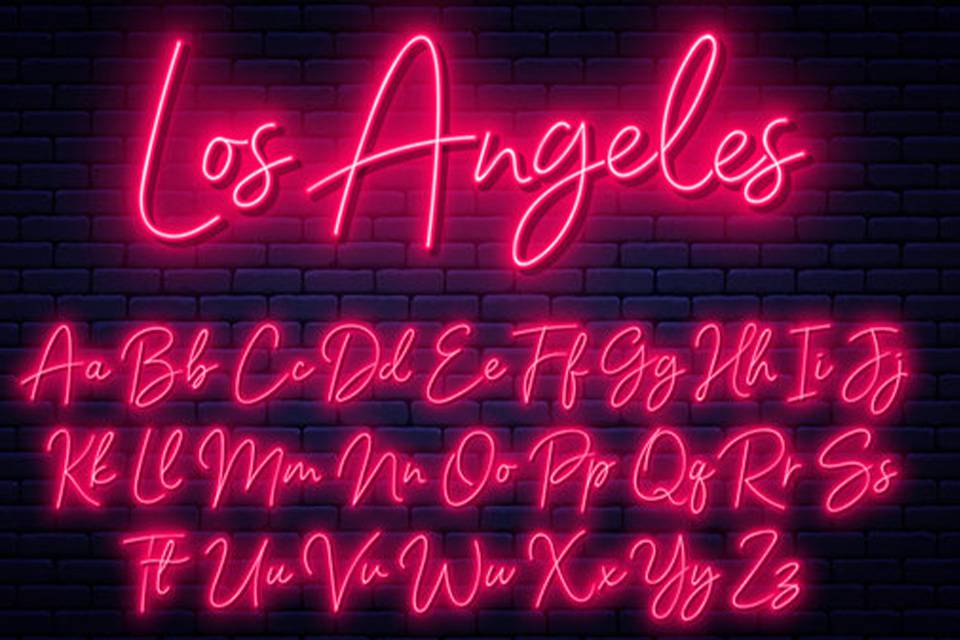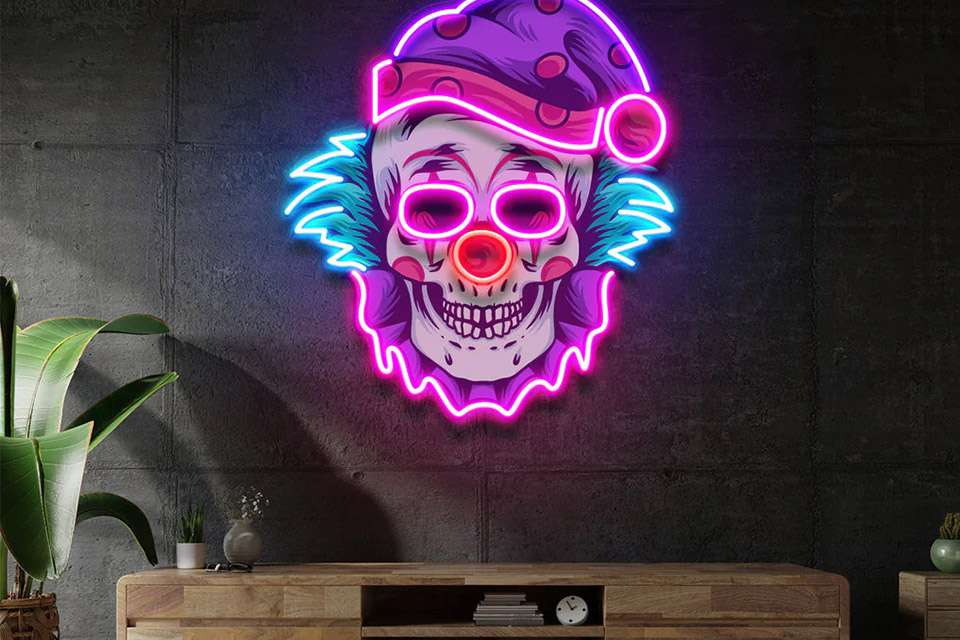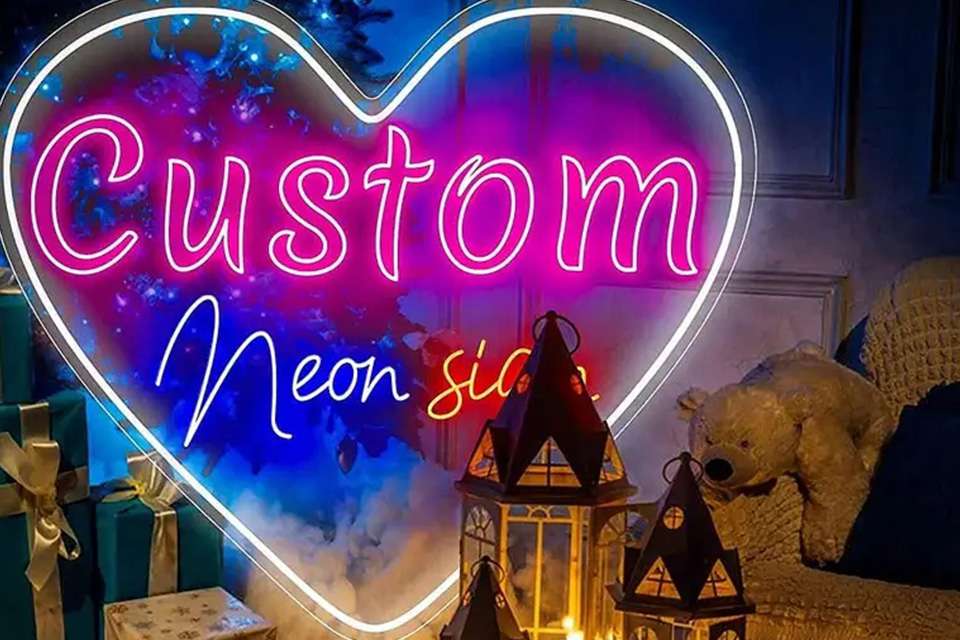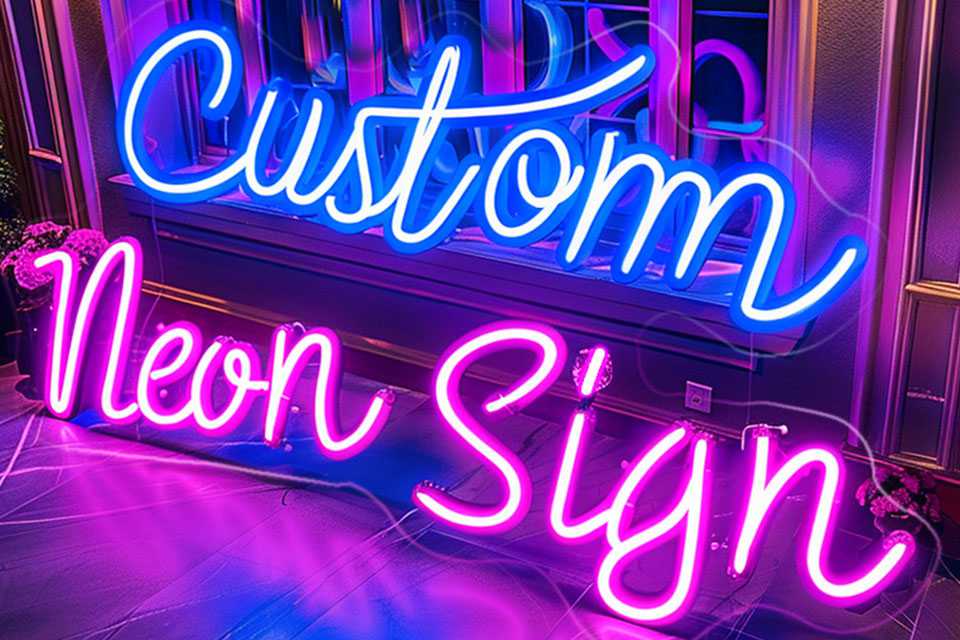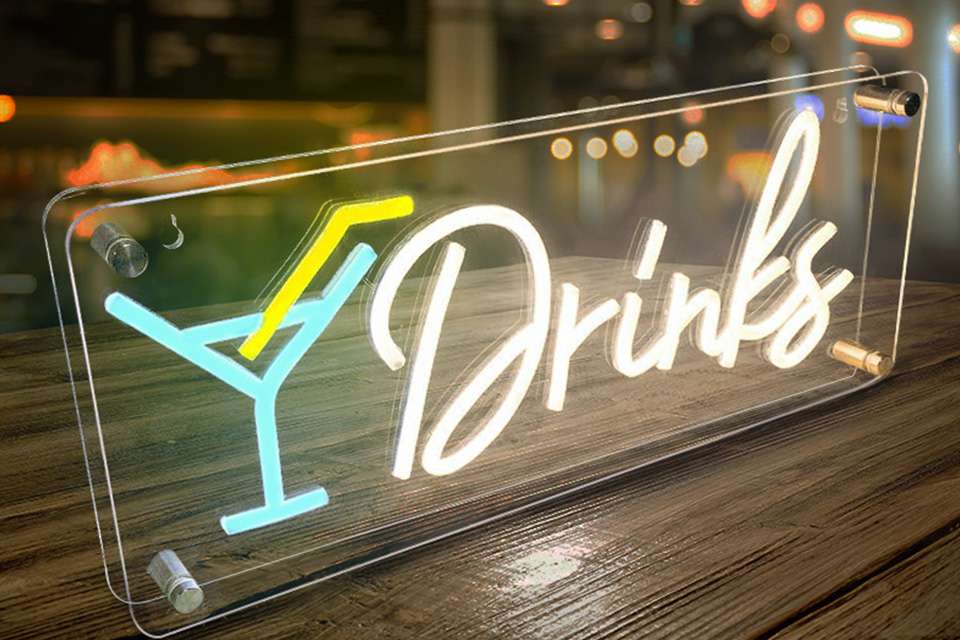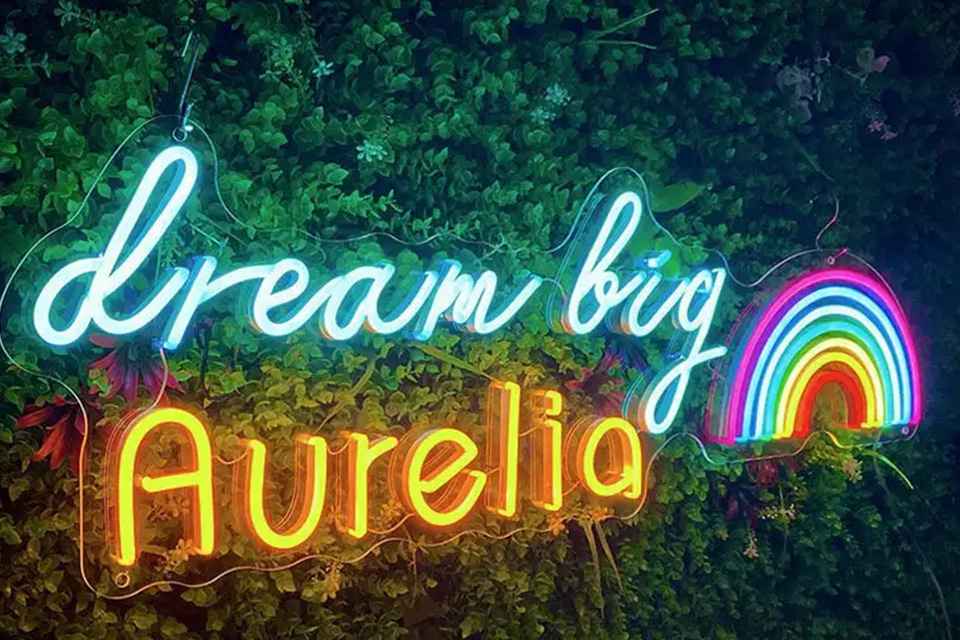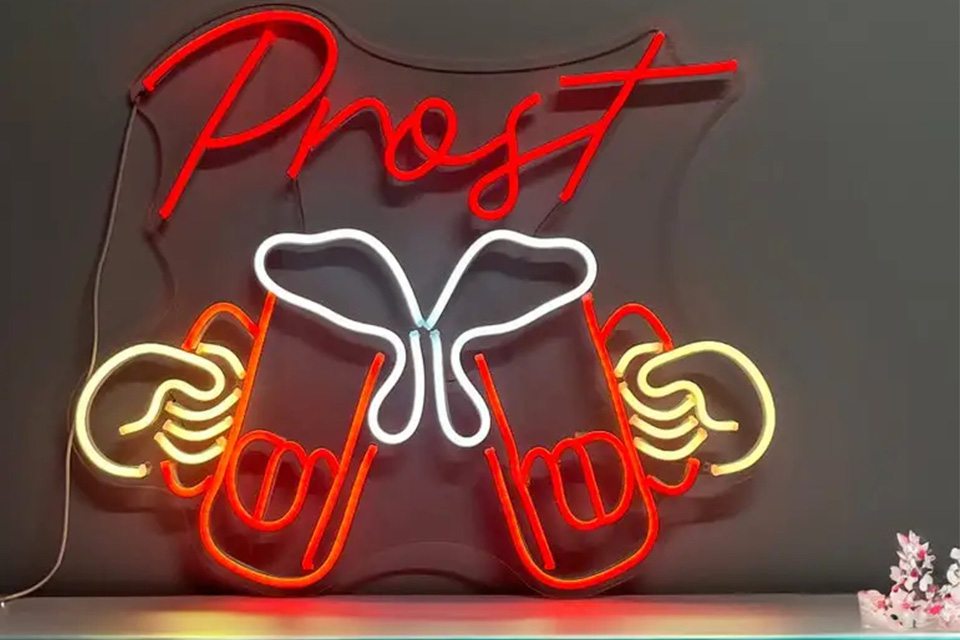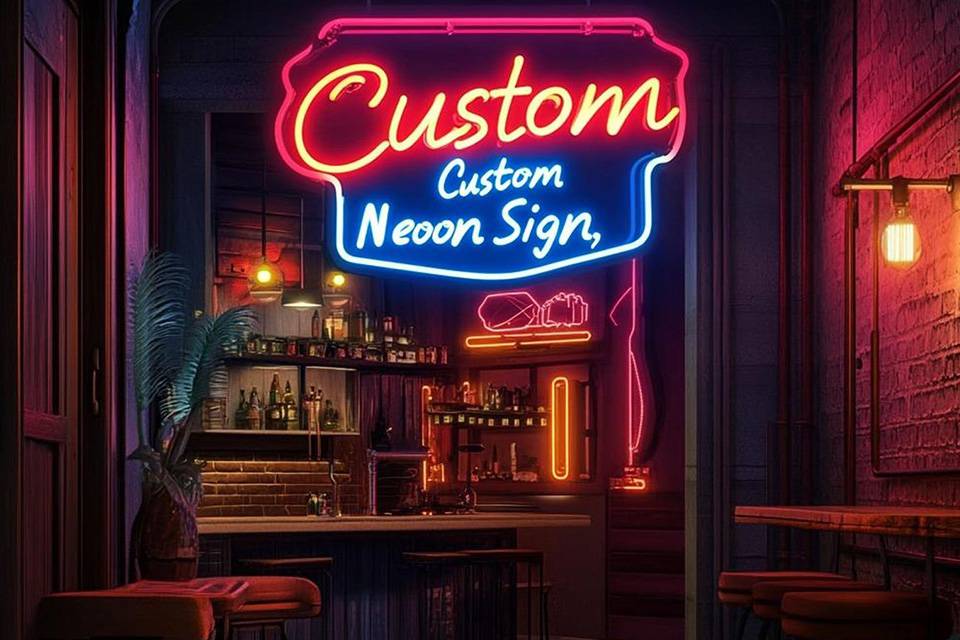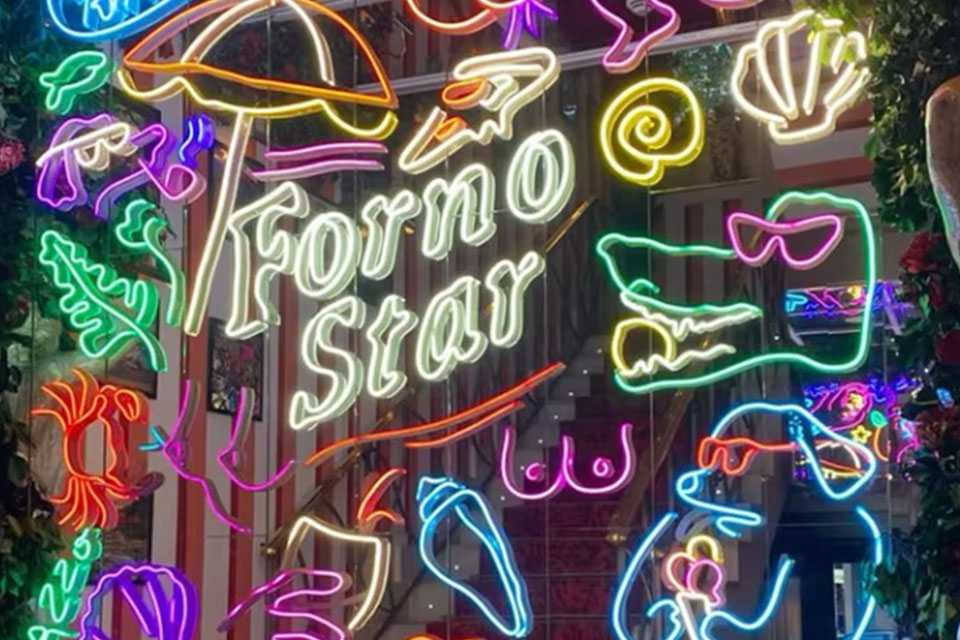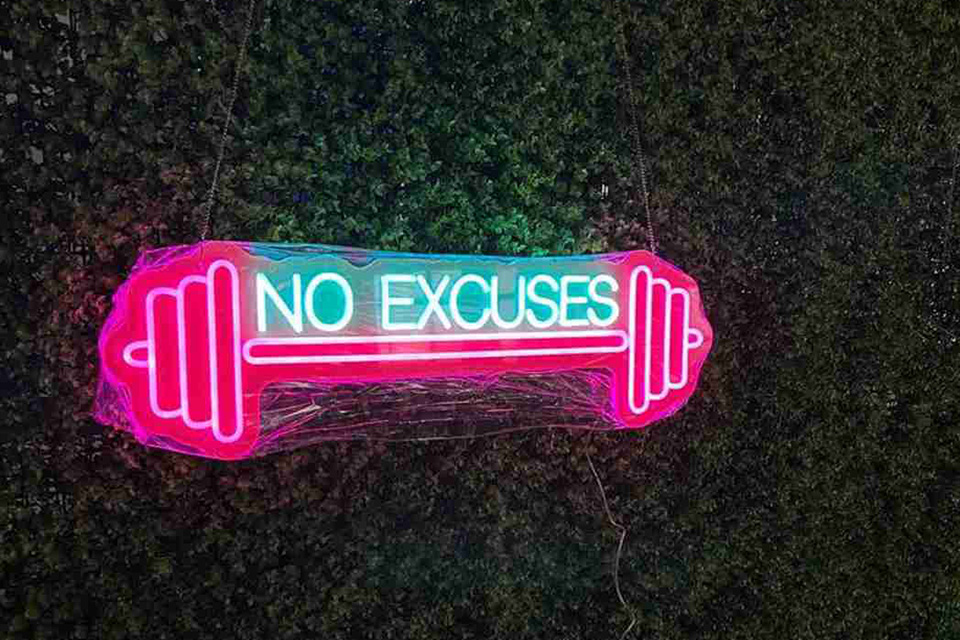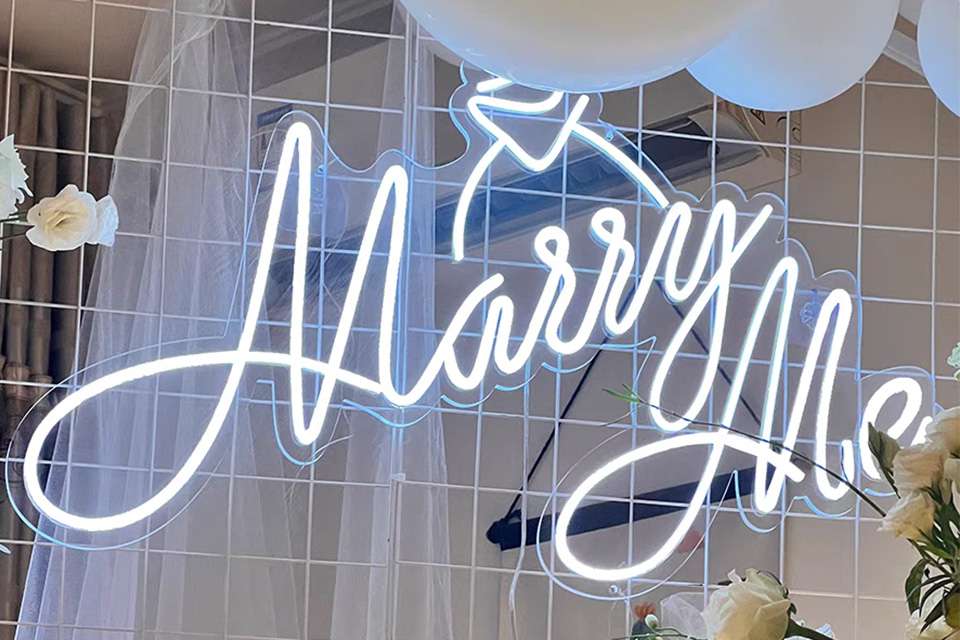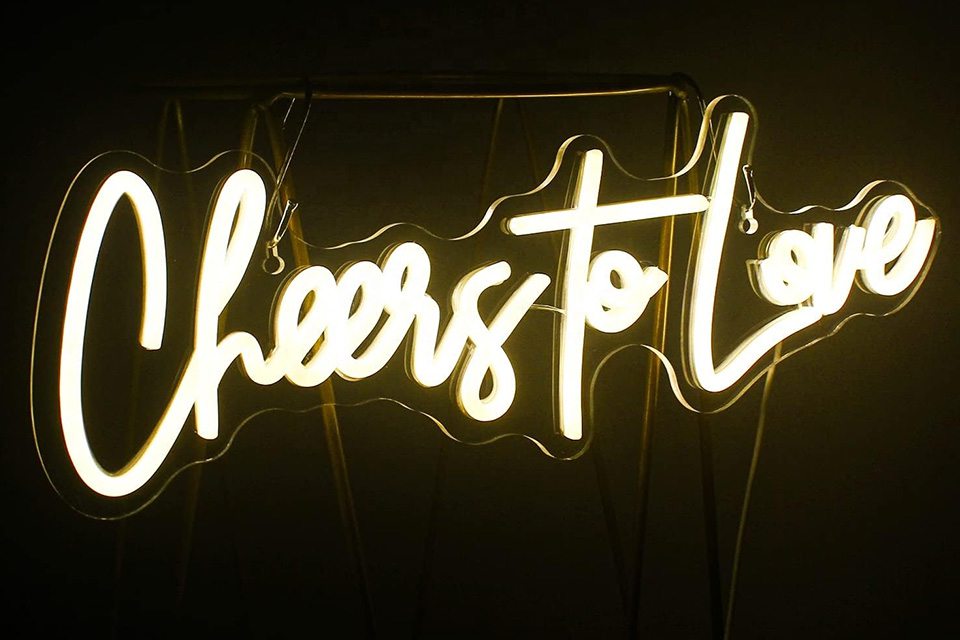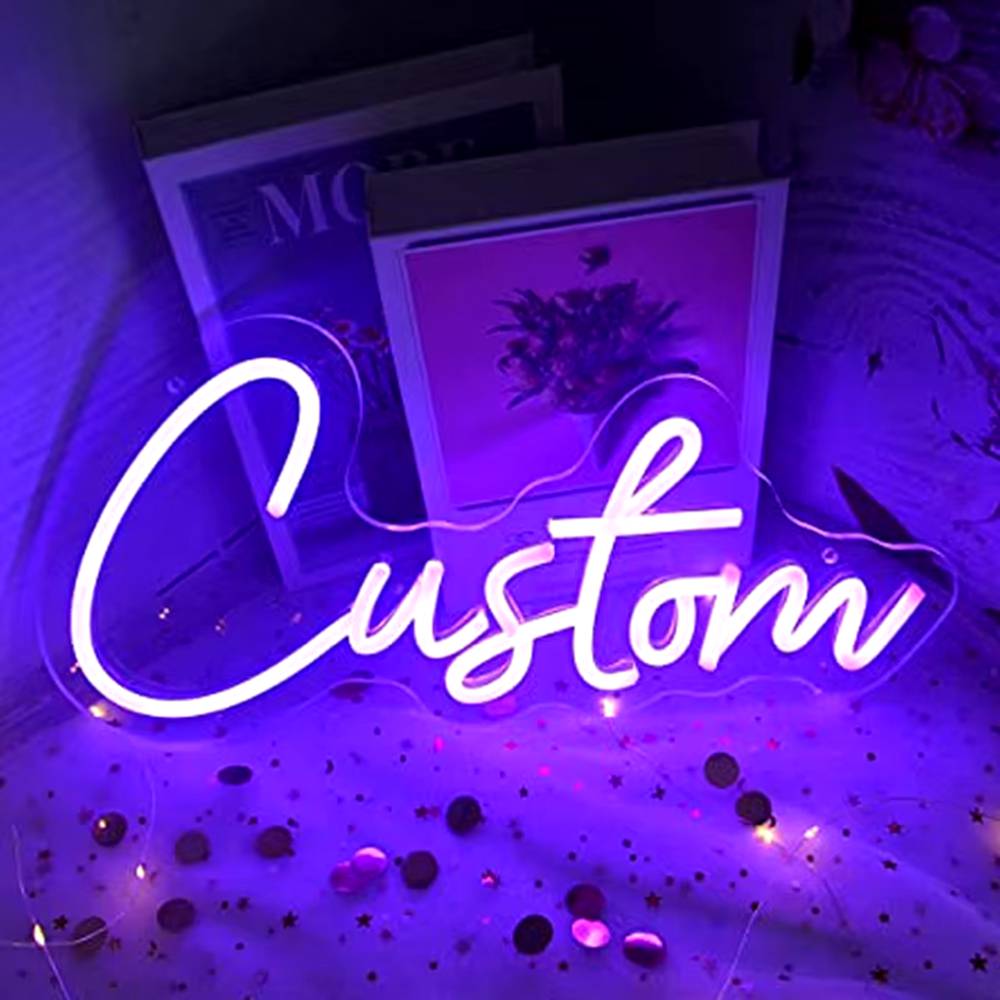
Neon vs LED: Welk type bord schijnt helderder voor uw behoeften?
Inhoudsopgave
This article dives into the illuminating world of signage, comparing neonlichten en LED neonlichten to help you decide which is the best fit for your needs. Whether you’re a business owner looking to attract customers or a homeowner seeking to add a unique touch to your decor, understanding the differences between neon vs LED is crucial. We’ll explore the technology, aesthetics, cost, and durability of each type, providing you with the knowledge to make an informed decision. This article is worth reading because it offers a comprehensive comparison of neon en LED signs, equipping you with the information needed to choose the bewegwijzering solution that best aligns with your budget, style, and practical requirements.
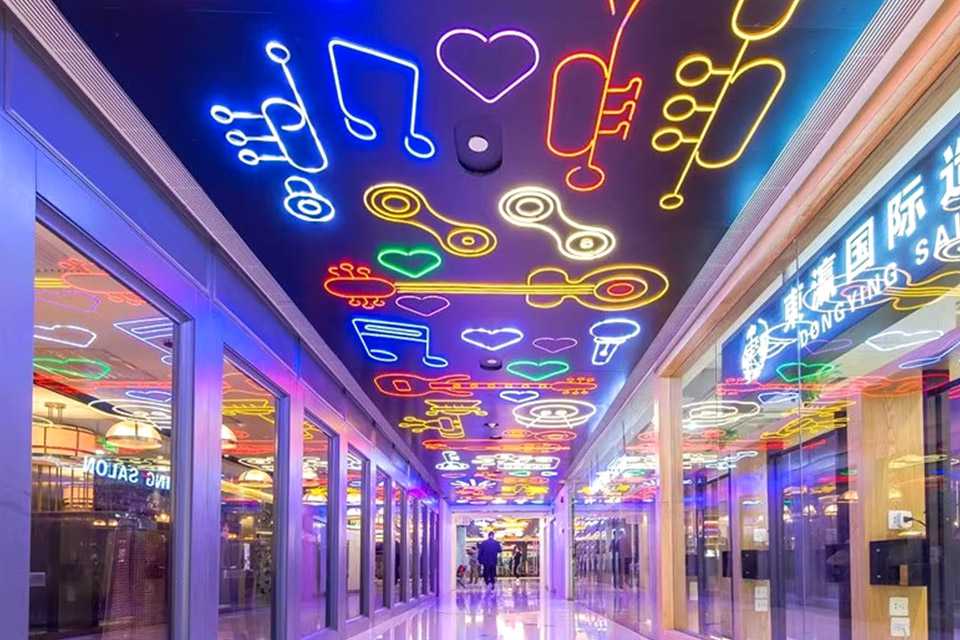
What Are Neon Signs and How Are They Made?
Neonlichten are luminous-tube signs that contain rarefied neon or other gases. Neonlichten are made by the craft of bending glass slang into shapes. Traditional neon signs are typically made of glass tubes filled met neongas. Deze signs use electrodes at each end of the glazen buis to excite the gas, causing it to emit light. The color of the light depends on the type of gas used and any coatings applied to the inside of the buis. Neonlichten offer classic and warm glow, that is perfect for many different places, like home.
Neon signs made in such way, have been a popular form of bewegwijzering for over a century, particularly for advertising. Neon advertising signs were especially popular in the mid-20th century, and many vintage neonlichten are now considered collectibles. Neonlichten kunnen worden gebruikt both indoors and outdoors, but they require careful handling due to the fragile nature of the glazen buizen. In glass neon lights, a power source is connected to each end of the slang. When the power source is switched on, it creates a high voltage that excites the neongas inside the buis. This excitation causes the gas to emit light.
What Are LED Neon Signs and How Do They Differ?
LED neonlichten are a modern alternative to traditionele neonlichten. Instead of using gas-filled glazen buizen, LED neonlichten use light-emitting diodes (LED's) to produce light. These LED's are typically encased in a flexible, durable material like acryl or silicone, often referred to as LED neon flex. Dit maakt LED-borden more resistant to breakage and easier to install than traditional neonlichten. LED neonlichten come in a variety of colors and can be programmed to create dynamic lighting effects.
LED neonlichten offer several advantages over traditionele neonlichten. Ze zijn meer energiezuinig, consuming less power and producing less heat. They also have a langere levensduur, lasting for tens of thousands of hours compared to the shorter lifespan of neonlichten. Additionally, LED neonlichten operate at a lower voltage, making them safer to handle and install. LED neon flex lights can be used to make aangepaste LED neonlichten of various shapes and sizes, offering endless design possibilities. In this type of borden LED's must be positioned close together to produce a steady source of light, mimicking the glow of a neonbuis.
Neon vs. LED: Energy Consumption and Lifespan
When comparing neon vs LED, energy consumption is a significant factor. Neonlichten typically consume more energy than LED neonlichten. Dit komt omdat neonlichten require a high voltage to excite the gas inside the glazen buizenterwijl LED's operate at a much lower voltage. The higher energy consumption of neonlichten translates to higher electricity bills over time.
In terms of lifespan, LED neonlichten have a clear advantage. LED's kan last between 8 and 15 years or even longer with proper care. In contrast, traditionele neonlichten have a shorter lifespan, typically ranging from 5 to 10 years. The lifespan of a neonlicht can be affected by factors such as the quality of the glazen buizen, the purity of the gas, and the operating conditions.
How Do Traditional Neon and LED Signs Differ in Terms of Safety?
Safety is a crucial consideration when choosing between neon en LED-borden. Traditional neon signs operate at high voltages, typically in the range of 2,000 to 15,000 volts. This high voltage poses a risk of electric shock if the bord is not handled or installed correctly. Additionally, the glazen buizen used in neonlichten are fragile and can break easily, creating a potential hazard from sharp glass shards.
LED neonlichten, on the other hand, operate at much lower voltages, typically 12 or 24 volts. This significantly reduces the risk of electric shock. Furthermore, LED neon flex is made from durable materials like acryl or silicone, making it much less prone to breakage than glazen buizen. Signs made van LED's are generally considered safer than traditionele neonlichten, especially in environments where the bord may be touched or bumped. In LED neonlichtende elektrische componenten are usually encased within the acryl of siliconen slang, further enhancing safety.
What About the Aesthetics of Neon and LED Signs?
Aesthetically, neon en LED-borden offer distinct visual qualities. Traditional neon signs have a warm, soft glow that many people find nostalgic and appealing. The light emitted by neongas has a unique character that is difficult to replicate with other lighting technologies. Neonlichten are often associated with a vintage or retro aesthetic, making them a popular choice for businesses and individuals seeking a classic look.
LED neonlichten, while designed to mimic the look of neon, have a slightly different appearance. The light produced by LED's tends to be brighter and more intense than neon light. Some people find the light from LED neonlichten to be harsher or more artificial compared to the softer glow of neon. However, LED-technologie has advanced significantly in recent years, and many modern LED neonlichten are able to closely replicate the look and feel of traditioneel neon.
Customization Options: Neon vs. LED
Both neon en LED-borden offer customization options, but the extent and nature of these options differ. Traditional neon signs zijn typically made by hand, with skilled artisans bending glazen buizen into the desired shapes. This allows for a high degree of customization, as virtually any shape or design can be created. However, the process of creating aangepaste neonlichten can be time-consuming and expensive.
LED neonlichten also offer customization, but the process is generally faster and more affordable. LED neon flex can be easily cut and shaped to create a wide range of designs. Many companies offer aangepaste LED neonlichten that can be designed online using simple software tools. This makes it easy to create personalized borden with custom text, logos, or graphics. Custom designs are always very welcome by the customers who need something special.

How Do Costs Compare for Neon and LED Signs?
De kosten van neon en LED-borden can vary depending on factors such as size, complexity, and materials. In general, traditionele neonlichten zijn meestal duurder dan LED neonlichten. This is due to the labor-intensive process of creating glazen neon and the higher cost of materials like glazen buizen en neongas.
LED neonlichten are typically more affordable, especially for smaller or simpler designs. The use of LED's and flexible materials like acryl helps to reduce both material and labor costs. Additionally, the longer lifespan and lower energy consumption of LED neonlichten can result in cost savings over time. If you are looking for borden voor je bedrijf you should take cost into consideration.
What Are the Installation Considerations for Neon and LED Signs?
Installation is another important factor to consider when choosing between neon en LED-borden. Traditional neon signs require careful handling and installation due to the fragile glazen buizen and high voltage. It is generally recommended to have neonlichten installed by a qualified professional to ensure safety and proper operation. Neonlichten are usually mounted to a backing panel made of metal or acryl.
LED neonlichten are typically easier to install than traditionele neonlichten. The flexible nature of LED neon flex allows it to be easily mounted to a variety of surfaces using adhesive, screws, or clips. Many LED neonlichten come with pre-drilled holes or mounting hardware for easy installation. The lower voltage van LED neonlichten also makes them safer to handle during installation.
Can I Create a DIY LED Neon Sign?
Yes, it is possible to create a DIY LED neon sign using flexible LED neon strips and a few basic tools. Many online retailers sell LED neon flex by the foot or in pre-cut lengths, along with connectors, power supplies, and mounting hardware. You will need to cut the LED neon flex to the desired lengths, connect the sections using the provided connectors, and connect the bord to a stroomvoorziening. You should always test the sign to ensure that all connections are secure and the LED's are functioning correctly.
Een DIY LED neon sign can be a fun and rewarding project, but it does require some basic electrical knowledge and skills. It is important to follow the manufacturer’s instructions carefully and to take appropriate safety precautions when working with electricity. If you are not comfortable working with electrical components, it is best to purchase a pre-made LED neon bord or hire a professional to create a aangepast bord voor jou.
What Kind of Maintenance Do Neon and LED Signs Require?
Neonlichten require regular maintenance to ensure they continue to function properly and look their best. The glazen buizen can become dirty over time and may need to be cleaned periodically. It is also important to inspect the bord regularly for any signs of damage, such as cracks or breaks in the glazen buizen. If a neonlicht stops working, it may need to be repaired by a qualified technician, which can involve replacing the glazen buizen or other components. Regular maintenance is a must, if you have decided on neon sign for your business.
LED neonlichten typically require less maintenance than traditionele neonlichten. De LED's are encased in durable materials like acryl or silicone, which helps to protect them from damage. However, it is still a good idea to inspect the bord periodically for any loose connections or signs of wear. Cleaning the surface of the bord with a soft cloth can help to keep it looking its best.
Tafels:
Table 1: Comparison of Neon and LED Signs
| Functie | Neonlichten | LED Neon Signs |
|---|---|---|
| Materiaal | Glass tubes filled with gas | LEDs encased in acrylic or silicone (LED neon flex) |
| Lichtbron | Excited gas (neon, argon, etc.) | Lichtgevende diodes (LED's) |
| Spanning | High (2,000 – 15,000 volts) | Low (12 or 24 volts) |
| Energieverbruik | Hoger | Onder |
| Levensduur | 5-10 years | 8-15 years or more |
| Helderheid | Moderate | Hoog |
| Kleur | Depends on gas and tube coatings | Breed scala aan kleuren beschikbaar |
| Duurzaamheid | Fragile glass tubes | Durable, flexible LED neon flex |
| Veiligheid | High voltage, fragile glass | Low voltage, durable materials |
| Kosten | Generally higher | Generally lower |
| Aanpassing | Highly customizable, but labor-intensive | Customizable, faster and more affordable |
| Installatie | Requires professional installation | Easier to install, often DIY-friendly |
| Onderhoud | Regular cleaning and inspections needed | Less maintenance required |
| Aesthetic | Warm, soft glow, vintage look | Bright, intense light, modern look |
Table 2: Common Gases Used in Neon Signs and Their Colors
| Gas | Kleur |
|---|---|
| Neon | Orange-red |
| Argon | Lavender (with mercury), Blue (without mercury) |
| Helium | Pink, Gold-white |
| Krypton | Greenish-white, Pale violet |
| Xenon | Blue-gray, Lavender |

Belangrijkste opmerkingen:
- Neonlichten are made of glass tubes filled met gasterwijl LED neonlichten gebruik LED's encased in flexibel materials like acryl.
- LED neonlichten are more energy-efficient and have a langere levensduur dan traditionele neonlichten.
- Neonlichten operate at high voltages and have fragile glazen buizenterwijl LED neonlichten are safer due to lower voltage and durable materials.
- Neonlichten offer a warm, nostalgic glow, while LED neonlichten produce a brighter, more intense light.
- Both neon en LED-borden can be customized, but LED neon customization is generally faster and more affordable.
- Neonlichten zijn meestal duurder dan LED neonlichten due to materials and labor costs.
- LED neonlichten are easier to install and often suitable for DIY projects.
- Neonlichten require regular maintenance, while LED neonlichten need less upkeep.
- The choice between neon en LED depends on factors like budget, aesthetic preferences, safety concerns, and maintenance considerations.
- Both neon and LED signs can create eye-catching bewegwijzering for businesses and interieur.

